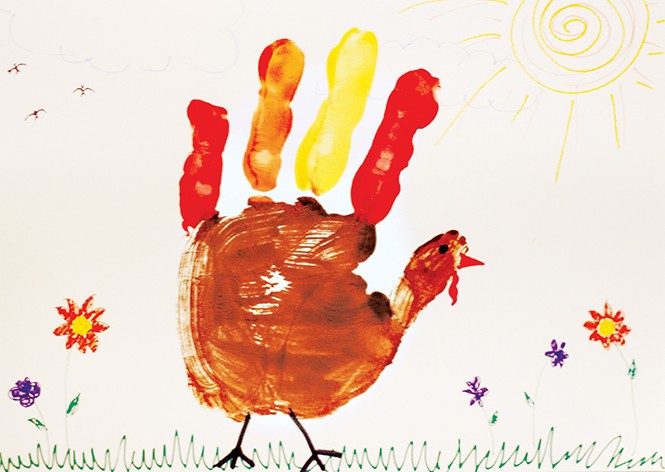Back in 1999, I shared my favorite roast turkey recipe with City Weekly readers, and since then, I've been gratified by the positive responses from those who've tried it. So, with Thanksgiving lurking just around the corner, here again is my can't-miss turkey recipe for your holiday meal (or any other time). Enjoy!
I prefer unbasted, natural, free-range birds. If you buy a frozen turkey, let it defrost in the fridge for two or three days. If you purchase one with a little plastic pop-up timers, they're unreliable, so use a meat thermometer to test if the turkey is fully cooked.
Brining the night before cooking helps ensure the turkey will be moist and tender. The process makes a noticeable difference in the texture and flavor of the meat, too. Dissolve 2 cups kosher salt or 1 cup regular table salt in 2 gallons of cold water in a clean bucket, large stock pot or lobster pot. Place the turkey in the pot and refrigerate, or keep in a very cool place (40 degrees or lower) for 8-12 hours. I brine on Thanksgiving Eve and put it out in the cold garage. In the morning, I remove the turkey from the brine and rinse it thoroughly inside and out to remove all traces of salt.
The problem with cooking most large turkeys is that by the time the dark meat is done, the breast is typically overcooked and dry. Here's how to help remedy that: After the turkey is defrosted, but still in the fridge, fill a large Ziploc bag with ice cubes. Lay the ice pack over the breast in the refrigerator, like saddlebags. The ice will keep the breast cooler than the rest of the bird. Keep the ice pack on the breast until you're ready to put the turkey in the oven. You won't believe what a difference this simple tip makes.
Health experts don't recommend cooking a turkey with stuffing or dressing in its cavities. But if you must, only stuff right before roasting, since dressing sitting in an uncooked turkey can develop nasty and dangerous bacteria. It's better to cook your stuffing separately—the turkey will cook faster, and the stuffing won't be saturated with fat.
Here's my method for cooking a 15-18-pound bird. You can modify the recipe using herbs, rubs, sauces or whatever you'd like. Adjust the oven rack to its lowest position; preheat to 400 degrees. Remove the neck and giblets from the body cavity. (If you brined your bird, you'll already have done this.) Remove the icepack saddle bags described above. Rinse the turkey with cold water inside and out and pat dry with paper towels. Brush or rub with 3-4 tablespoons of melted unsalted butter. Generously sprinkle inside and out with salt and freshly ground black pepper. (You can also add herbs like thyme, rosemary, etc. at this stage.) Place a quartered onion inside the body cavity.
Place the turkey upside down (with the breast facing downward) on a nonstick roasting rack, and put the roasting rack in a large roasting pan. Place the turkey in the oven and cook for one hour at 400 degrees. After an hour, lower the oven temperature to 250 degrees and roast for an additional 1 hour and 45 minutes.
Remove the turkey from the oven and flip it breast side up. (I do this with big wads of paper towels.) Baste the breast with pan juices. Increase the heat to 400 degrees, put it back into the oven and continue cooking until the breast registers 160 degrees and thigh registers 175-180 degrees on an instant-read thermometer. This should take anywhere from 45 minutes to 1 1/2 hours, depending on the size of the turkey.
Be sure to let the meat rest—and you should do the same—for about 20 minutes before you start hacking it up. The bird will be unbelievably moist and easy to carve.
Happy Thanksgiving!
More by Ted Scheffler
-
Flavor on the Western Front
Nomad Eatery ups the ante for off-airport eats.
- Dec 13, 2017
-
Under the Christmas Tree
Holiday gifts for cooks, foodies and winos
- Dec 6, 2017
-
Spreading the Love
Amour Café creates simple yet scrumptious fare.
- Nov 29, 2017
- More »





